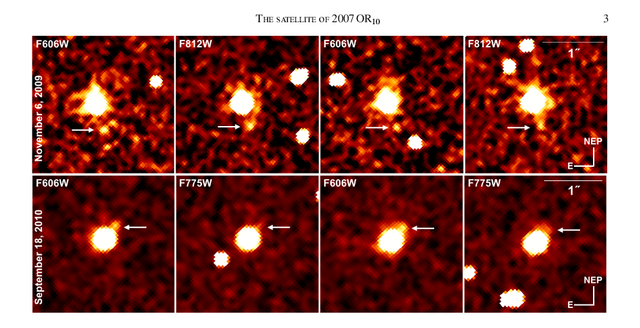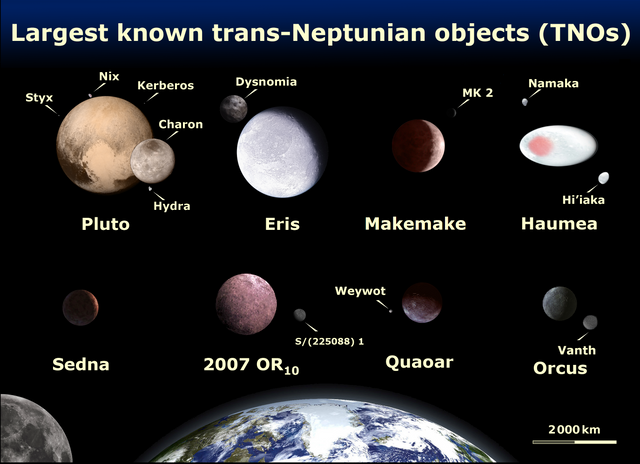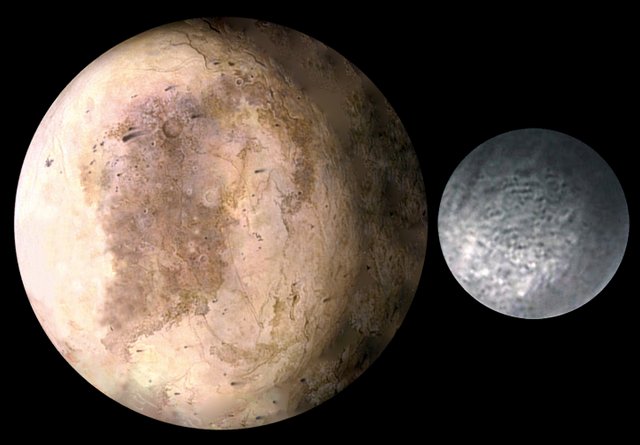Discovery of a satellite of the largest yet unnamed Kuiper Belt body
The third largest (currently) dwarf planet in the Transneptunian region still has not the name and is designated as (225088) 2007 OR10, in short just 2007 OR10 (no relation to C3PO or R2D2). Its effective diameter is ∼1535 km, and it orbits the Sun at highly elliptical orbit with main axes 33 - 101 a.u. (astronomical units, 1 a.u. = distance from Earth to Sun). Its rotation period of ∼45 hours is quite slow for Kuiper Belt objects, what indicated presence another body nearby, which slowed the rotation of the dwarf planet.

Image: Wikipedia
The new study by group of astronomers, published on March, 3, reports on the discovery of a likely moon of 2007 OR10, identified on archival Hubble Space Telescope images. As it often happens now, the satellite was seen on the Hubbles images since 2010, but is identified only now.

Image: Archive.org
Hubble Space Telescope WFC3/UVIS images of 2007 OR10. The suspected satellite can be most readily identified on the F606W images and is marked by a white arrow on each image (North is up and East is left, in Ecliptic coordinates).
The new-discovered satellite has a diameter of about 237 km and probably is not tidally locked with its master planet, which means that it is not turned to 2007 OR10 with one side, as Earth's Moon.
New estimate for the system mass leads to a likely 35 to 100 days orbital period which is also very unusual for Kuiper Belt bodies. Obviously, slow rotation of 2007 OR10 and long orbital period of its satellite are related, but mechanism is not yet known.
Interesting, that with this discovery all trans-Neptunian objects larger than 1000 km are now known to harbour satellites, an important constraint for moon formation theories in the young Solar system .

Image: Wikimedia
Looks like now, the largest dwarf planet without known satellite is Sedna.
Another interesting fact is that both 2007 OR10 and the satellite are among the reddest objects known in the trans-Neptunian region. Pluto has some reddish tones due to methan presence on its surface, but unlike 2007 OR10, its largest satellite, Charon is gray, without any red tone.

Image:Wikimedia
As 2007 OR 10 diescoverer, Mike Brown, had not propose its name, in 2017 the right to give it a name passes to International Astronautical Congress. Hopefully, dwarf planet and its new-discovered satellite will get their names soon